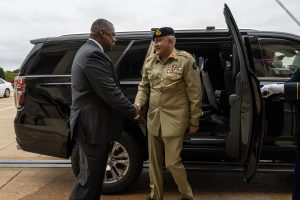Tom Nagorski and Lili Pike
:quality(100):focal(2990x1530:3000x1540)/cloudfront-us-east-1.images.arcpublishing.com/thesummit/QEI3MQWT2BBX7C47L5BFX6LLGE.jpg)
Chinese President Xi Jinping’s speech to the Communist Party congress Sunday — a roughly two-hour address that is being dissected by China watchers the world over — was both Xi’s case for a third term and a State of the Union-style statement about his country.
But it was also notable for what it wasn’t.
A little over a year ago, Xi gave another speech, to the Central Financial and Economic Affairs Commission — a less significant occasion and thus less covered and analyzed by the global media. While that address, too, was billed as a roadmap for China’s future, its emphasis differed markedly from what China’s leader said Sunday. And a look at the two speeches says much about how China has changed in just a little more than a year.











